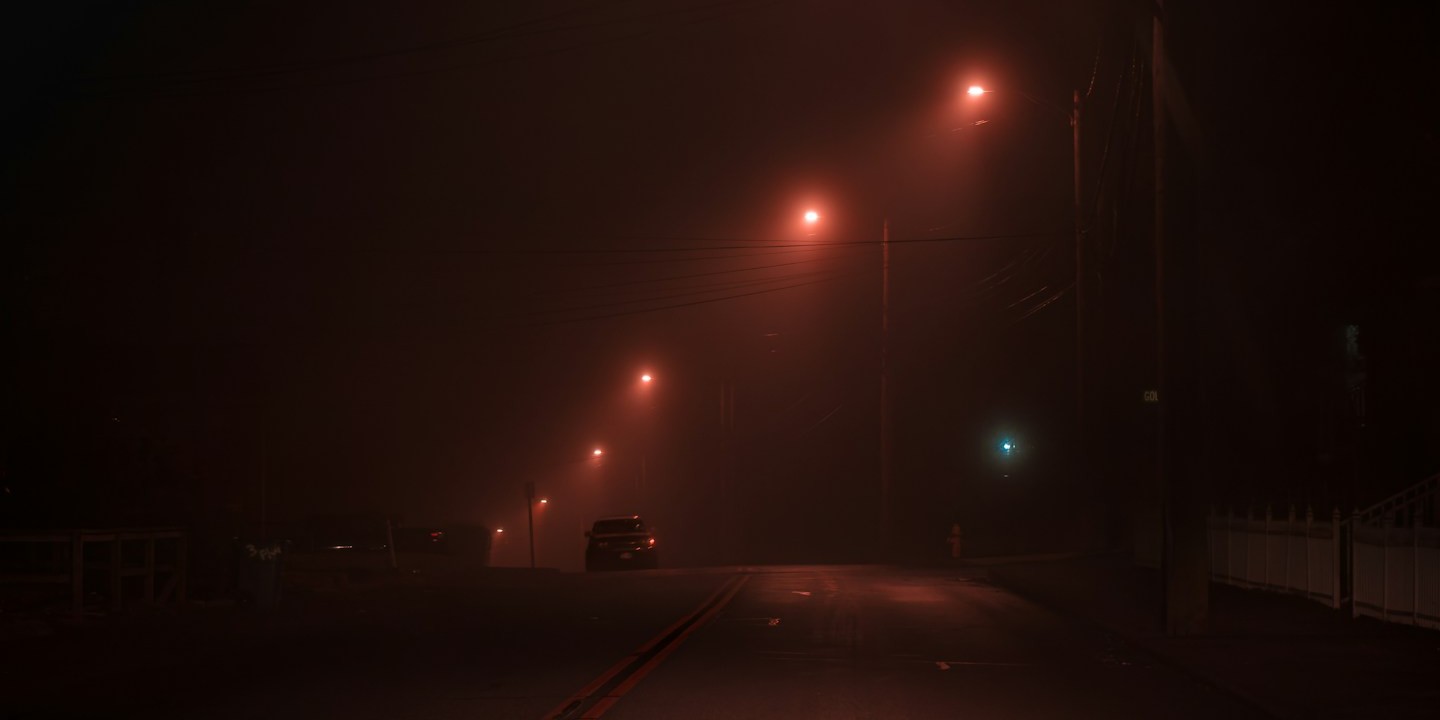Rare Animals From Around The World
Who are the rarest animals in the world? It's not as simple a question as it might seem.
To date, scientists have identified about 1.3 million individual species currently living on Earth. But the truth is we know shockingly little about our own planet, since scientists also estimate that there are really about 8.7 million species in the world overall. It's just that we've only discovered about 15% of them.
But of the species we know, these are among the very rarest. Which is a shame, because they're all fascinating and beautiful in their own ways.
15. Colombian Dwarf Gecko — Lepidoblepharis miyatai
In fairness, perhaps we've only underestimated the number of dwarf geckos in the wild because they are difficult to spot. They only grow to a maximum length of 2 cm (0.8 in) and like to spend their days amid the foliage of the forest floor in remote Colombian provinces.
Interestingly, the species was first documented in 1964 but not seen again for decades. They were presumed extinct until a population was found to be living about 60 miles from where they were first discovered.
The Colombian dwarf gecko is considered Critically Endangered.
 José Gabriel Julio Guzmán on Wikimedia
José Gabriel Julio Guzmán on Wikimedia
14. Attenborough's Long-Beaked Echidna — Zaglossus attenboroughi
Also known as 'Sir David's long-beaked echidna', this curious mammal is indeed named for David Attenborough, of Life and Earth fame.
You may have heard it said that platypuses are the only mammals on earth that lay eggs. It's not true. Echidnas lay eggs also, and the Attenborough variety are the smallest and rarest of the species. In fact, only one specimen has even been examined.
They live only in the Cyclops Mountains of Indonesia. Unfortunately, they've been hunted to near-extinction because it's a local custom to present an echidna to an enemy as a gesture of peace.
13. Philippine Eagle — Pithecophaga jefferyi
They're also known as monkey-eating eagles, and suffice it to say they've earned that name! Philippine eagles are among the world's largest birds of prey as well as one of the rarest animals in the world. They are definitely capable of bringing down and eating unwary primates -- although they also eat mice, pigs, monitor lizards, and whatever else is to hand.
Unfortunately, deforestation and habitat destruction has led to a radical decline of their population. There are now only estimated to be 250-270 individuals left. Killing one will land you in Philippine jail for up to 12 years.
12. Purple frog — Nasikabatrachus sahyadrensis
The purple frog is certainly one of the weirder-looking amphibians on earth. Unfortunately, it's rarely seen, since it actually spends most of its time burrowing under the ground. These rare frogs only emerge from their underground lairs once a year -- to mate at the beginning of the rainy season.
Because purple frogs breed only in specific location, their population is at risk due to deforestation. They are found only in the mountains of western India.
 Original uploader was Karthickbala at ta.wikipedia on Wikimedia
Original uploader was Karthickbala at ta.wikipedia on Wikimedia
11. Black-Spotted Cuscus — Spilocuscus rufoniger
Most people find the black-spotted cuscus to be slightly off-putting -- probably because of its slitted, snakelike eyes. But humans have proven far more frightening than this harmless marsupial; their habitat has been reduced due to human expansion and hunting. (Yes, hunting. We are their only known predator.)
The black-spotted cuscus lives only on the island of New Guinea north of Australia. Although its numbers in the wild are unknown, it is listed as Critically Endangered and is surely one of the rarest animals in the world.
10. Borneo (pygmy) Elephant – Elephas maximus borneensis
Despite what the name suggests, pygmy elephants are not really that small. They can still grow to nearly 10 feet. But they are the most docile and pleasant of all the Asian elephant species -- so gentle that many theorize they are descended from domesticated elephants.
Unfortunately, their population has been devastated by loss of habitat and poaching. Incidents with humans result in many deaths every year -- both of people and elephants. Today, there are no more than 1,500 Borneo pygmy elephants left.
 Mike Prince from Bangalore, India on Wikimedia
Mike Prince from Bangalore, India on Wikimedia
9. Hector's Dolphins — Cephalorhynchus hectori
Hector's dolphins may be the most beautiful in the world with their distinctive shape and markings, but they're also the rarest. One subspecies, the Maui's dolphin, has only 55 individuals still living in the wild according to conservationists. Overall, though, there are estimated to be 7,000 Hector's dolphins left in the world.
The species in listed as endangered, and they're found only along the shores of western New Zealand.
Hector's dolphins can be distinguished by their stockier frame, rounded fins, and dark face markings.
8. Amur leopards — Panthera pardus orientalis
Amur leopards live not in Africa, but in the far east of Russia and parts of China, along the Pacific coast. These beautiful cats are generally solitary, although some research suggests males may remain with females for some time after impregnating them, forming a sort of family unit. Fathers may even play some role in raising young. Amur leopards can live as long as 15 years in the wild.
Like many other rare species, they are threatened by poachers who kill them for their pelts. Their population in the wild may now be as low as 84 individuals.
 Colin Hines www.ColinHinesPhotography.com on Wikimedia
Colin Hines www.ColinHinesPhotography.com on Wikimedia
7. Saola — Pseudoryx nghetinhensis
The saola is a pretty confusing animal, all told. It's often referred to as the unicorn of Asia and it looks like some sort of deer, but it's technically a bovine. It is so rare that it was only discovered in 1992 -- the first totally new, land-dwelling mammal to be discovered in 50 years.
They can be distinguished by their horns and white markings, and live only in hilly regions of Laos and Vietnam. Because they are so seldom encountered, little is known about them. It's not clear how many remain in the wild, but saolas are considered Critically Endangered.
 The original uploader was Silviculture at Vietnamese Wikipedia. on Wikimedia
The original uploader was Silviculture at Vietnamese Wikipedia. on Wikimedia
6. Vaquita — Phocoena sinus
The vaquita is the rarest marine animal on Earth, and sadly it seems all but destined for extinction some time soon.
Vaquitas look much like porpoises, but they have dark circles around their eyes and rather pouty little mouths. Between 1996 and 2016, the vaquita population has declined from 600 to about 30, mostly as a result of illegal fishing. They're not targeted specifically, but rather have an unfortunate tendency to get caught in fishing nets.
They live only in the northernmost waters of the Gulf of California.
 Paula Olson, NOAA on Wikimedia
Paula Olson, NOAA on Wikimedia
5. Northern Hairy Nosed Wombat — Lasiorhinus krefftii
Wombats in general are weird and wonderful, but this subspecies is among the very rarest animals in the world.
Although they once roamed across a large swath of the Australian continent, the northern hairy nosed wombat can now only be found in a tiny 3-km square area of Queensland. They are furry, nocturnal fellows who spend most of their time burrowing underground.
The decline in their population has been due to human expansion, but also natural competition, disease, and disaster. The most recent estimate suggests there are no more than 230 individuals remaining in the wild.
4. Chinese Giant Salamander — Andrias davidianus
These oddly beautiful creatures are the largest amphibians in the world, growing to lengths of 1.8 meters (6 feet). They may have evolved as many as 170 million years ago, so they definitely have a track record as survivors.
But the reason those two poor salamanders pictured above are waiting at a bucket in a restaurant is because they're a valuable delicacy. Which makes them a favorite target of poachers. Which makes them a Critically Endangered species.
It's not clear how many Chinese giant salamanders remain in the wild, but they're certainly one of the most at-risk species on this list.
 J. Patrick Fischer on Wikimedia
J. Patrick Fischer on Wikimedia
3. Hainan Gibbon — Nomascus hainanus
2. Angonoka Tortoise — Astrochelys yniphora
Native to the island of Madagascar (much like David Schwimmer), the angonoka or ploughshare tortoise is incredibly beautiful. In fact, I bet you're thinking about how amazing it would be to have one as a pet right now. While their shells are bumpy and uniquely alluring, we must beg you not to consider taking one as a pet. One of the reasons there are only about 400 individuals left in the wild is because so many have been captured and trafficked as exotic pets.
As a result, angonoka tortoises are now Critically Endangered.
1. Metallic Tarantula — Poecilotheria metallica
Because of their unique cobalt coloring, metallic tarantulas are fairly popular as pets -- you know, as tarantulas go. But in the wild they live only in one forest in southern India. Due to deforestation and the destruction of their natural habitat, as well as their very small range, they are considered Critically Endangered.
Metallic tarantulas eat insects. They move very quickly and while their venom is not lethal to humans, it can cause intense pain and require medical attention.
















